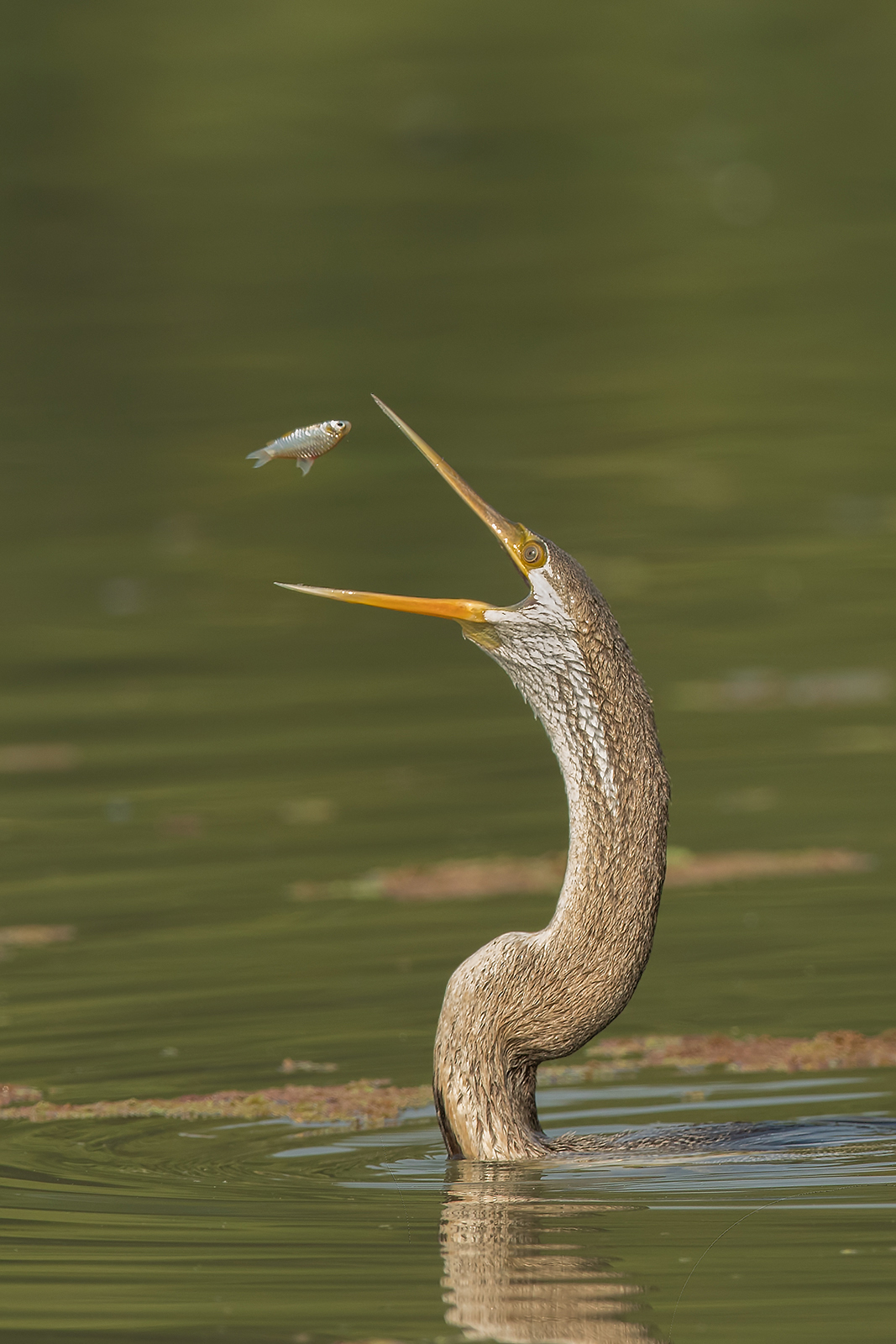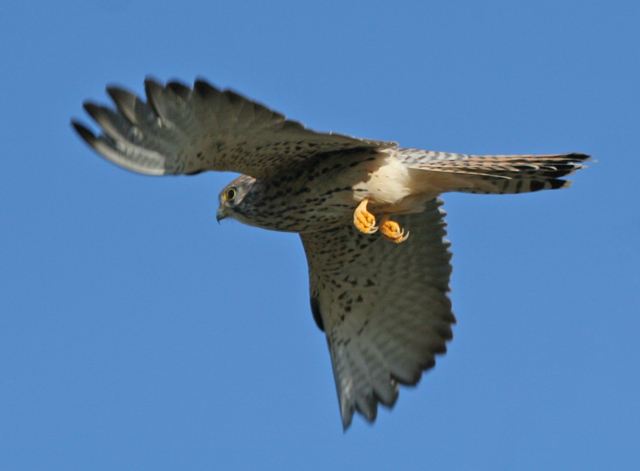|
Kanwar Lake Bird Sanctuary
The Kanwar Taal or Kabar Taal Lake or Kabartal Wetland located in Begusarai district of Bihar, India, is Asia's largest freshwater oxbow lake. It is approximately six timesKanwar lake: birds' paradise lost https://www.downtoearth.org.in/news/kanwar-lake-birds-paradise-lost-44693 the size of the Bharatpur Sanctuary. In November 2020, the Ministry of Environment, Forest and Climate Change ( MoEFCC) declared it the first Ramsar site in Bihar. There are a total of 75 Ramsar Sites in India till 2022. Kanwar jheel, as it is locally called, is located 22 km north-west of Begusarai Town in Manjhaul. It is a residual oxbow lake, formed due to meandering of Burhi Gandak river, a tributary of Ganga, in the geological past. It covers 2,620 hectares of the Indo-Gangetic plains in the northern Bihar State. The Site is one of 18 wetlands within an extensive floodplain complex; it floods during the monsoon season to a depth of 1.5 metres. This absorption of floodwaters is a vital service ... [...More Info...] [...Related Items...] OR: [Wikipedia] [Google] [Baidu] |
Begusarai District
Begusarai District is one of the thirty-eight districts of the Indian state of Bihar. The city of Begusarai is its administrative headquarters and is part of the Munger division. History Begulsarai was established in 1870 as part of Munger District. In 1972, it was given district status. Simaria village is the birthplace of famous Hindi poet Ramdhari Singh Dinkar. Begusarai is part of the historic Mithila or Mithilanchal region. Begusarai is notable for its milk, sweets and dairy products. Geography Begusarai district occupies an area of , The district lies on the northern bank of the river Ganges. Begusarai district is a part of Munger division. It is located at latitudes 25.15N & 25.45N and longitudes 85.45E & 86.36E. The Ganges river separates Begusarai district from Patna District and Munger District. Flora and Fauna In 1989 Begusarai district became home to the Kanwar Lake Bird Sanctuary Kanwar Lake Bird Sanctuary Wildlife Sanctuary, which has an area of . It is Asia's ... [...More Info...] [...Related Items...] OR: [Wikipedia] [Google] [Baidu] |
Patna
Patna ( ), historically known as Pataliputra, is the capital and largest city of the state of Bihar in India. According to the United Nations, as of 2018, Patna had a population of 2.35 million, making it the 19th largest city in India. Covering and over 2.5 million people, its urban agglomeration is the 18th largest in India. Patna serves as the seat of Patna High Court. The Buddhist, Hindu and Jain pilgrimage centres of Vaishali, Rajgir, Nalanda, Bodh Gaya and Pawapuri are nearby and Patna City is a sacred city for Sikhs as the tenth Sikh Guru, Guru Gobind Singh was born here. The modern city of Patna is mainly on the southern bank of the river Ganges. The city also straddles the rivers Sone, Gandak and Punpun. The city is approximately in length and wide. One of the oldest continuously inhabited places in the world, Patna was founded in 490 BCE by the king of Magadha. Ancient Patna, known as Pataliputra, was the capital of the Magadh Empire through Haryanka, ... [...More Info...] [...Related Items...] OR: [Wikipedia] [Google] [Baidu] |
Yellow-throated Sparrow
The yellow-throated sparrow or chestnut-shouldered petronia (''Gymnoris xanthocollis'') is a species of sparrow found in southern Asia. Description It has a finer bill than typical sparrows of the genus ''Passer'' and unlike them has no streaks on the plumage. The white double wing bar on the shoulder is diagnostic on the otherwise dull grey-brown sparrow. Males have a chestnut shoulder patch which can sometimes be hard to see. They also have a pale yellow spot on the throat in fresh plumage. Females are duller and lack the chestnut shoulder patch. The yellow spot is much reduced or lacking in females. This species is tree-loving although sometimes seen on wires and on the ground, where it has a hopping gait. The usual call is a ''chirrup'' but the song is distinctive and repetitive '. It has a bounding flight and dips deeply before rising up. Taxonomy This species has sometimes been lumped along with the yellow-spotted petronia ('' Petronia pyrgita'') of Africa. Curr ... [...More Info...] [...Related Items...] OR: [Wikipedia] [Google] [Baidu] |
Red-naped Ibis
The red-naped ibis (''Pseudibis papillosa'') also known as the Indian black ibis or black ibis is a species of ibis found in the plains of the Indian Subcontinent. Unlike other ibises in the region it is not very dependent on water and is often found in dry fields a good distance away from water. It is usually seen in loose groups and can be told by the nearly all dark body with a white patch on the shoulder and a bare dark head with a patch of crimson red warty skin on the crown and nape. It has a loud call and is noisy when breeding. It builds its nest most often on the top of a large tree or palm. Description The red-naped ibis is a large black bird with long legs and a long downcurved bill. The wing feathers and tail are black with blue-green gloss while the neck and body are brown and without gloss. A white patch on the shoulders stands out and the top of the featherless head is a patch of bright red warty skin. The warty patch, technically a caruncle, is a triangular patch ... [...More Info...] [...Related Items...] OR: [Wikipedia] [Google] [Baidu] |
Siberian Stonechat
The Siberian stonechat or Asian stonechat (''Saxicola maurus'') is a recently validated species of the Old World flycatcher family (Muscicapidae). Like the other thrush-like flycatchers, it was often placed in the Turdidae in the past. It breeds in the East Palearctic including in easternmost Europe and winters in the Old World tropics. Description, systematics and taxonomy It resembles its closest living relative the European stonechat (''S. rubicola''), but is typically darker above and paler below, with a white rump and whiter underparts with less orange on the breast. The male in breeding plumage has black upperparts and head (lacking the brownish tones of the European stonechat), a conspicuous white collar, scapular patch and rump, and a restricted area of orange on the throat.Robertson (1977), Stoddart (1992), Urquhart & Bowley (2002) The female has pale brown upperparts and head, white neck patches (not a full collar), and a pale, unstreaked pinkish-yellow rump. Males i ... [...More Info...] [...Related Items...] OR: [Wikipedia] [Google] [Baidu] |
Black-bellied Tern
The black-bellied tern (''Sterna acuticauda'') is a tern found near large rivers in the Indian subcontinent, its range extending from Pakistan, Nepal and India to Myanmar. It has become very scarce in the eastern part of its range and the International Union for Conservation of Nature has assessed its conservation status as being endangered. They have a black belly in the summer and a deep forked tail. They can sometimes resemble whiskered terns (''Chlidonias hybrida''), but the deeper fork of the tail and the black on the lower belly distinguish them from the shallow fork and black closer to the breast on the whiskered tern. Considering that sequence analysis supports moving the similar black-fronted tern (''"Sterna" albostriata'') into ''Chlidonias'', this species might also be better placed in that genus, but no research has yet been conducted. Description The black-bellied tern grows to a length of . In the breeding plumage, the crown and nape are black and the upper parts ... [...More Info...] [...Related Items...] OR: [Wikipedia] [Google] [Baidu] |
Painted Stork
The painted stork (''Mycteria leucocephala'') is a large wading bird, wader in the stork family. It is found in the wetlands of the plains of tropical Asia south of the Himalayas in the Indian Subcontinent and extending into Southeast Asia. Their distinctive pink Flight feather#Tertials, tertial feathers of the adults give them their name. They forage in flocks in shallow waters along rivers or lakes. They immerse their half open beaks in water and sweep them from side to side and snap up their prey of small fish that are sensed by touch. As they wade along they also stir the water with their feet to flush hiding fish. They nest colonially in trees, often along with other waterbirds. The only sounds they produce are weak moans or bill clattering at the nest. They are not bird migration, migratory and only make short distance movements in some parts of their range in response to changes in weather or food availability or for breeding. Like other storks, they are often seen soaring ... [...More Info...] [...Related Items...] OR: [Wikipedia] [Google] [Baidu] |
Indian Darter
The Oriental darter (''Anhinga melanogaster'') is a water bird of tropical South Asia and Southeast Asia. It has a long and slender neck with a straight, pointed bill and, like the cormorant, it hunts for fish while its body is submerged in water. It spears a fish underwater, bringing it above the surface, tossing and juggling it before swallowing the fish head first. The body remains submerged as it swims, and the slender neck alone is visible above the water, which accounts for the colloquial name of snakebird. Like the cormorants, it has wettable feathers and it is often found perched on a rock or branch with its wings held open to dry. Description The Oriental darter is like all other anhingas, a cormorant, cormorant-like species that has a very long neck. The structure of the neck is as in other species of darter with strongly developed muscles about a kink in the neck at the 8th and 9th vertebrae that allows it to be flexed and darted forward with rapid force to stab fish u ... [...More Info...] [...Related Items...] OR: [Wikipedia] [Google] [Baidu] |
Lesser Kestrel
The lesser kestrel (''Falco naumanni'') is a small falcon. This species breeds from the Mediterranean across Afghanistan and Central Asia, to China and Mongolia. It is a summer bird migration, migrant, wintering in Africa and Pakistan and sometimes even to India and Iraq. It is rare north of its breeding range, and declining in its European range. The genus name derives from Late Latin ''falx'', ''falcis'', a sickle, referencing the claws of the bird, and the species name commemorates the German naturalist Johann Friedrich Naumann. Description It is a small bird of prey, in length with a wingspan. It looks very much like the larger common kestrel but has proportionally shorter wings and tail. It shares a brown back and barred grey underparts with the larger species. The male has a grey head and tail like male common kestrels, but lacks the dark spotting on the back, the black Cheek, malar stripe, and has grey patches in the wings. The female and young birds are slightly paler ... [...More Info...] [...Related Items...] OR: [Wikipedia] [Google] [Baidu] |
Greater Spotted Eagle
The greater spotted eagle (''Clanga clanga''), occasionally called the spotted eagle, is a large bird of prey. Like all typical eagles, it belongs to the family Accipitridae. Its feathered legs indicate it is a member of the subfamily Aquilinae, also known as the "booted eagles".Helbig, A. J., Kocum, A., Seibold, I., & Braun, M. J. (2005). ''A multi-gene phylogeny of aquiline eagles (Aves: Accipitriformes) reveals extensive paraphyly at the genus level''. Molecular phylogenetics and evolution, 35(1), 147-164. This species was once thought to be included in the genus '' Aquila'' but now belongs to a distinct genus, '' Clanga'', along with the other two species of spotted eagles.Helbig, A. J., Seibold, I., Kocum, A., Liebers, D., Irwin, J., Bergmanis, U., Meyburg, B.-U., Scheller, W., Stubbe, M. & Bensch, S. (2005). ''Genetic differentiation and hybridization between greater and lesser spotted eagles (Accipitriformes: Aquila clanga, A. pomarina)''. The Journal of Ornithology, 146(3 ... [...More Info...] [...Related Items...] OR: [Wikipedia] [Google] [Baidu] |





.jpg)